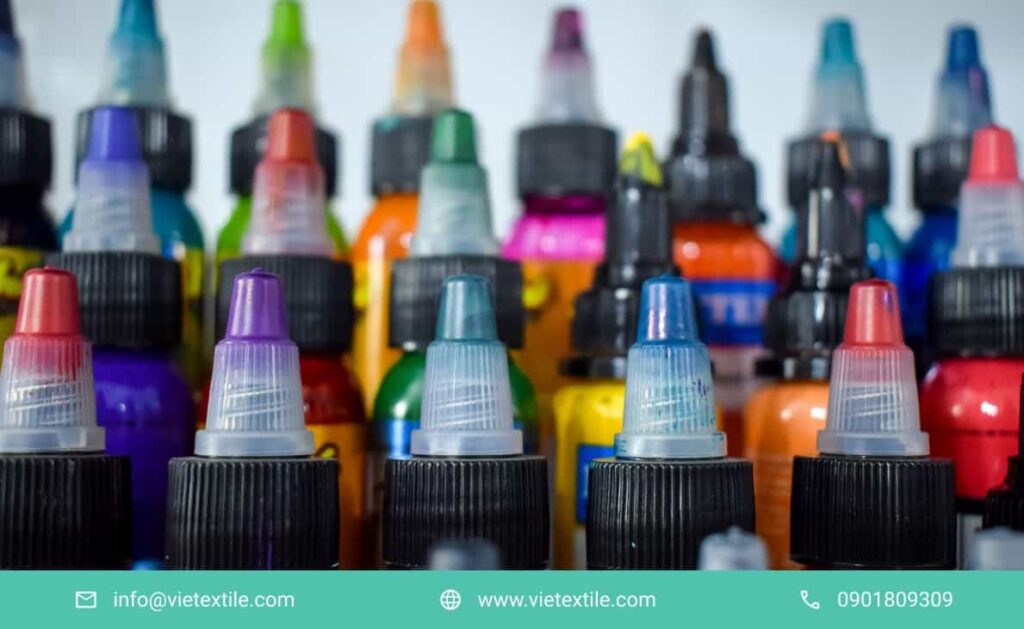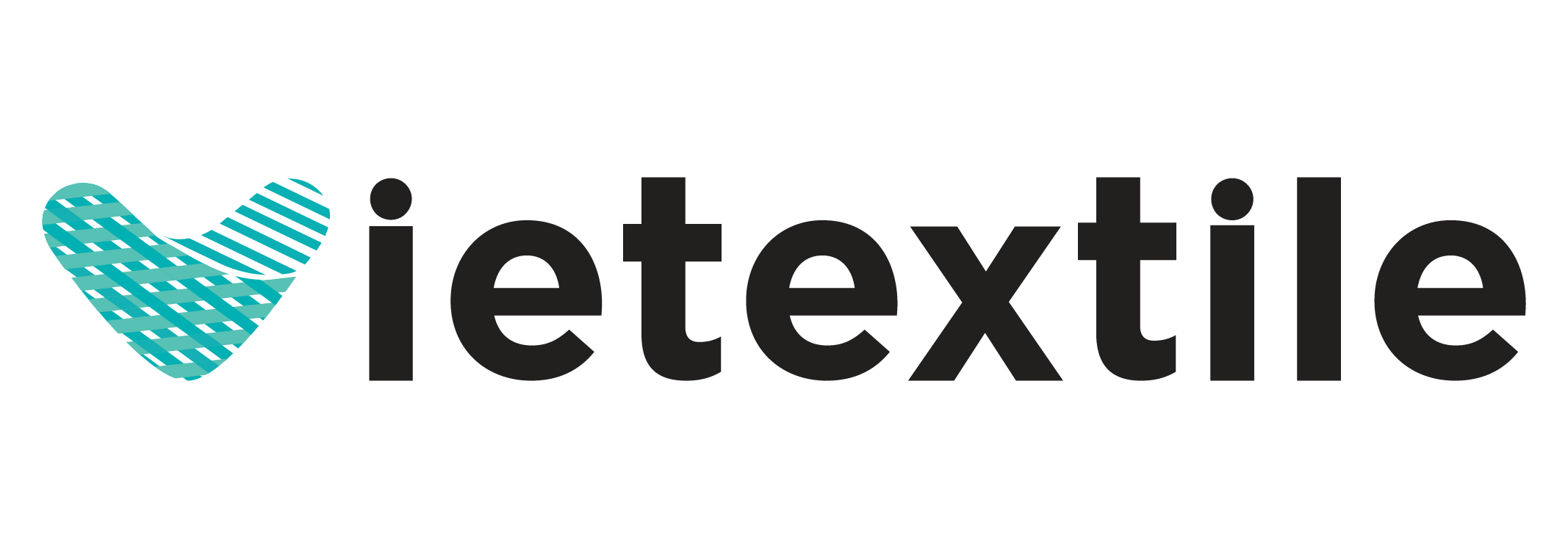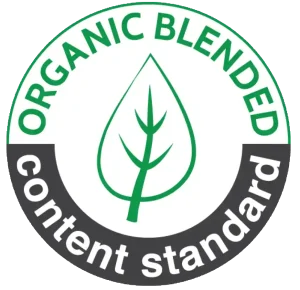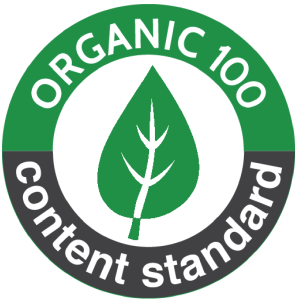Reactive Dyes are the most widely used class of colorants for cellulosic fibers, including Cotton, Viscose, Modal, and Lyocell. The superior feature of reactive dyes is their ability to form a strong Covalent Bond with the fiber, providing outstanding wash, rubbing, and light fastness compared to Direct or Vat Dyes.
However, this very complex chemical reaction mechanism demands the stringent control of three key physical and chemical factors within the dye bath: Temperature, Salt, and pH/Alkali.
Even minor deviations in controlling these three factors can lead to severe defects such as unlevelness, poor fastness (due to hydrolysis), or wastage of dyes and chemicals. This in-depth article will analyze the detailed mechanism of how pH, Temperature, and Salt influence the reactive dyes process, while also providing technological solutions and machinery spare parts to ensure optimal color fixation efficiency.

1. The Reactive Dyeing Mechanism: The Core Chemical Foundation
Nội dung tóm tắt
ToggleTo understand the roles of Salt, Temperature, and pH, we must grasp the two main phases of the reactive dyeing process: Exhaustion and Fixation.
1.1. Phase 1: Exhaustion – The Role of Salt
Exhaustion is the process where the dye leaves the solution and moves to adhere to the fiber surface. This is a physical process, occurring before the chemical reaction.
- Cellulose Fiber in Water: In an aqueous medium, both the Cellulose fiber (Cell-OH) and the Reactive Dyes molecule (anionic, carrying a negative charge) are negatively charged (Zeta Potential), creating an electrostatic repulsion force. This hinders the movement of the dye into the fiber.
- The Role of Salt: Salt (NaCl or Na2SO4) provides positive ions (Na+) that help neutralize the negative charges on the fiber surface and around the dye molecule. This neutralization reduces the electrostatic repulsion, allowing the reactive dyes to approach and adhere to the fiber surface more easily.
1.2. Phase 2: Fixation – The Role of Alkali/pH
Fixation is the chemical reaction that forms a stable Covalent Bond between the dye and the fiber.
- Alkali-Dependent Reaction: Reactive dyes only react and fix color when the Hydroxyl group (-OH) on the Cellulose fiber is “activated” in an alkaline environment (pH high). Alkali (e.g., Na2CO3 – Soda Ash) removes the H+ ion from the OH group, generating a highly nucleophilic, negatively charged Cellulosate group (Cell-O-).
- Covalent Bond Formation: This Cellulosate group then attacks the Reactive Group (Dye-X) on the dye molecule, forming the stable Covalent Bond.
Cell-OH + OH- \xrightarrow{Alkali Cell-O- + H2OCell-O- + Dye-X \longrightarrow Cell-O-Dye + X-
1.3. The Role of Temperature (Diffusion)
Temperature provides the necessary energy for both stages:
- Diffusion: High temperature increases the kinetic energy of the reactive dyes molecules, helping them diffuse rapidly from the surface into the amorphous regions of the fiber.
- Reaction Rate: Increasing temperature increases the rate of the chemical reaction (fixation), but also increases the rate of hydrolysis (reaction with water), a competing reaction that causes dye loss.
2. In-Depth Analysis of the Salt Factor: The Driving Force for Absorption
Salt is the physical factor that most significantly affects the initial exhaustion efficiency of reactive dyes.
2.1. Mechanism of Zeta Potential Control
The depth of shade is directly proportional to the amount of salt added.
- Ionic Strength: Adding salt increases the ionic strength of the solution. Na+ ions concentrate at the boundary between the solution and the fiber, compressing the fiber’s Electrical Double Layer.
- Repulsion Cancellation: When the double layer is compressed, the electrostatic repulsion (Zeta Potential) between the dye (negative) and the fiber (negative) sharply decreases, allowing the reactive dyes to be driven onto the fiber surface. This is a prerequisite for dye absorption.
2.2. Optimal Salt Quantity for Different Shade Depths
The required amount of salt for reactive dyes depends on the desired Shade Depth:
- Light Shades: Require less salt (e.g., 30 – 40 g/L NaCl). The reason is that strong absorption can lead to uneven dyeing because the reactive dye concentration in the bath is low.
- Deep/Dark Shades: Require very high salt quantities (e.g., 80 – 120 g/L NaCl or Na2SO4). The goal is to achieve the highest possible exhaustion rate before the alkali is added.
2.3. Challenges and Solutions for Salt Control
- Common Error: If salt is added too quickly, the reactive dye will be “shocked” and absorb locally on the fiber surface, causing patchiness or unlevelness.
- Technological Solution:
- Dyeing Machine Spare Parts: Use a Dosing Pump system or automated chemical feed system. Salt addition must be programmed (Ramping) to occur gradually over 15 – 30 minutes.
- Effluent Control: Excess salt is the primary cause of high TDS (Total Dissolved Solids) content in wastewater, a major environmental challenge.
3. In-Depth Analysis of the Temperature Factor: Balancing Diffusion and Reaction
Temperature is the kinetic factor, determining the speed of molecular movement and the condition under which the reactive groups on the dye react.
3.1. Temperature’s Effect on Diffusion
- Fiber Structure Disruption: High temperature causes the Cellulose polymer chains to vibrate strongly, increasing the distance between chains and “opening” the fiber structure, allowing large reactive dyes molecules to diffuse deep into the amorphous regions.
- Increased Kinetic Energy: The kinetic energy of the dye molecules increases, helping them move faster, shortening the dyeing time.
3.2. Temperature’s Effect on Reaction Rate (Kinetics)
Each type of reactive dyes has a different Optimal Dyeing Temperature (T{opt) due to varying reactive group structures:
| Reactive Group | Common Name | Optimal Temp (T{opt) | Dyeing Characteristic |
| Dichlorotriazine (DCT) | Cold Brand | 30-60C | Fast reaction, prone to hydrolysis if temperature is exceeded. |
| Monochlorotriazine (MCT) | Medium Brand | 60-80C | Balanced, medium reaction rate. |
| Vinyl Sulfone (VS) | Hot Brand | 80-95C | Requires high temperature for activation, highest fastness. |
3.3. Controlling the Rate of Rise
Controlling the Rate of Rise of temperature is the key to achieving high levelness:
- Critical Zone (60-85C): This is the zone where reactive dyes begin to absorb strongly. If the temperature rises too fast (> 2C/min), the dye will absorb locally, causing unlevelness.
- Technical Solution: Modern dyeing machines (HTHP Jet, Jigger) must have precisely operating steam valves and heat exchangers. Dyeing machine spare parts must ensure the Pneumatic Control Valve can adjust the heating rate very subtly according to the PLC program.
4. In-Depth Analysis of the pH/Alkali Factor: Deciding Fixation Efficiency

pH is the most critical chemical factor, acting as the “switch” that activates the color fixation reaction of reactive dyes.
4.1. The Role of Activation
Alkali has two tasks:
- Fiber Activation: Converts Cell-OH to Cell-O-, the attacking agent (Nucleophile).
- Acid Neutralization: If the reactive dyes is prepared in an acidic environment (e.g., water contaminated with CO2), alkali neutralizes the environment, ensuring the dyeing pH meets requirements.
4.2. Competing Reaction: Fixation vs. Hydrolysis
This is the biggest challenge when using reactive dyes. The color fixation reaction and the Hydrolysis reaction (reaction with water H2O) occur simultaneously:
- Fixation: Dye-X + Cell-O- \longrightarrow Dye-Cell (Covalent Bond)
- Hydrolysis: Dye-X + OH- \longrightarrow Dye-OH (Dye is deactivated)
pH and Hydrolysis:
- pH Too High: Increases the rate of the fixation reaction, but also increases the rate of hydrolysis. Leads to dye waste and generates a large amount of useless dye discharged into the environment.
- pH Too Low: The fixation rate is too slow, failing to achieve the necessary color fastness.
4.3. Controlling Alkali Type and Precise Dosing
Alkali control must consider the type of reactive dyes:
| Alkali Type | Formula | Primary Application | Notes |
| Sodium Carbonate (Soda Ash) | Na2CO3 | Most common, for most MCT and VS types. Medium pH (10.5-11.5). | Easy to control, creates a stable pH buffer. |
| Sodium Bicarbonate (Baking Soda) | NaHCO3 | Used for Cold Brand Dyes (DCT). Lower pH (8.0-9.0). | More subtle control at low temperatures. |
| Sodium Hydroxide (Caustic Soda) | NaOH | Often used for Pad-Batch dyeing. Very high pH (>12). | Increases fixation rate, easily damages fiber if temperature is uncontrolled. |
Spare Parts Requirement: The alkali Dosing System must be extremely precise. It must be programmed so that the alkali is added after the Salt has completed exhaustion and the Temperature has reached T{opt.
5. The Complex Interaction of the Three Factors
The reactive dyeing process is not an independent function of the three factors but a chain reaction interaction:
5.1. Salt – Temperature – Initial Fixation
If too much salt is added at a low temperature, the reactive dyes will absorb quickly and sit on the fiber surface. When alkali is added, the fixation reaction occurs immediately on the surface, causing Surface Fixation (unlevel fixation). To remedy this, the temperature needs to be increased slowly after salt addition to help the dye diffuse deep into the fiber before the alkali is added.
5.2. Temperature – pH – Hydrolysis
High temperature promotes the fixation reaction rate, but also promotes the hydrolysis rate.
- Example: If Hot Brand Dyes (VS) are used at 90C but an overly strong or excessive amount of alkali is used, the hydrolysis rate will spike, reducing color fixation efficiency and increasing cost.
Rule: Temperature and pH must be balanced. The type of reactive dyes (Hot/Cold) determines the optimal Temperature/pH pair.
6. Common Dyeing Defects Due to Poor Control of the 3 Factors
Loose control of the three factors—Salt, Temperature, and pH/Alkali—is the leading cause of mass production dyeing defects.
6.1. Shade Variation and Unlevelness (Levelness \& Tailing)
Cause: Excessively fast exhaustion rate.
Errors:
- Salt: Adding too much salt, or adding salt too quickly (no Ramping).
- Temperature: Increasing the temperature too quickly in the Critical Reaction Zone (CRZ): 60-85C).
- Alkali/pH: Adding alkali too early or using alkali with an initial pH that is too high.
Consequence: The reactive dyes fixes on-spot, without time to move and diffuse uniformly.
6.2. Poor Wash Fastness
Cause: The dye does not form a covalent bond (only absorbed) or hydrolyzed dye is trapped within the fiber.
Errors:
- Alkali/pH: Insufficient alkali addition or incorrect timing, leading to incomplete fixation reaction.
- Temperature: Temperature does not reach T{opt, and the fixation reaction is incomplete.
Consequence: Residual dye on the fiber washes off during laundering, reducing fastness and staining the wash water.
6.3. Batch-to-Batch Variation
Cause: Lack of Reproducibility in controlling the 3 factors.
Errors:
- Dyeing Machine Spare Parts: pH sensor is uncalibrated, temperature control steam valve is faulty.
- Salt/Alkali: Manual dosing, leading to concentration differences between batches.
Consequence: Significant shade variation, requiring redyeing, increasing cost and reducing fiber quality.
7. Machinery Spare Parts Requirements for Precise Control of the 3 Factors
Precision in reactive dyeing requires machinery and spare parts to function perfectly.
7.1. Absolute pH/Alkali Control
- pH Electrode (pH Sensor): Must be able to withstand high temperatures and chemicals. The sensor needs daily calibration with buffer solutions. pH sensor error is the number one cause of failure in Reactive Dyes.
- Dosing Pump and Control Valve: The system must ensure alkali is added to the dye bath at a precise, milliliter-accurate speed and concentration, following the slow Ramping program.
7.2. Temperature and Heating Rate Control
- Pneumatic Control Valve (Steam Valve): The valve must be sensitive and respond quickly to the PLC controller signal. The steam valve is responsible for regulating the amount of hot steam entering the heat exchanger, thereby controlling the temperature rise rate.
- Heat Exchanger: Needs to ensure stable heat transfer efficiency. Clogging or reduced efficiency will increase heating time, affecting the precision of T{opt.
- Temperature Sensor: Must be positioned accurately in the dye bath and checked for precision regularly.
7.3. Dye Liquor Circulation Control (Salt & Dye)
- Circulation Pump: The circulation pump must provide a stable flow rate (e.g., Liquor-to-Goods ratio L/S) throughout the dyeing process. A fault in the Impeller or motor will reduce the circulation speed, leading to concentration differences in Salt and reactive dyes, causing unlevelness defects.
8. Optimizing Cost and Minimizing Reactive Dye Hydrolysis

Optimizing the control of the 3 factors not only improves quality but also significantly reduces production costs and environmental impact.
8.1. Isothermal Dyeing Technique
This is a modern technique aimed at optimizing the use of reactive dyes:
- Exhaustion: Dyeing begins at a low temperature (60C), Salt is added and held at this temperature for the reactive dyes to exhaust slowly and evenly onto the fiber.
- Rapid Heating: After complete exhaustion, the temperature is quickly raised to T{opt (e.g., 90C for VS).
- Fixation: Alkali is added and held at T{opt.
This technique clearly separates the exhaustion phase (Salt/Low Temperature) and the fixation phase (Alkali/High Temperature), allowing maximum control over all three factors.
8.2. Reducing Salt Concentration with New Auxiliaries
Advanced dyeing auxiliaries (Salt Reduction Agents) can partially replace Salt, helping to maintain the necessary driving force for absorption without excessively increasing the TDS content in the effluent. This is not only environmentally friendly but also reduces wastewater treatment costs.
9. VieTextile: Spare Parts Control Solutions for Reactive Dyeing
VieTextile specializes in supplying precise dyeing machine spare parts, helping textile mills perfectly control the three factors—Salt, Temperature, and pH/Alkali—during the use of reactive dyes.
We understand that technical precision is the key to achieving high fastness and color fixation efficiency above 85\%.
- Control Valve Systems: Providing various steam, water, and high-speed drain valves, ensuring the temperature Ramping rate and effluent discharge are accurate according to the PLC program.
- Sensors and Measurement Equipment: Calibrated pH sensors, electrodes, and heat-resistant temperature controllers, helping to monitor and adjust Alkali/pH in real-time.
- Circulation Pump Spare Parts: Providing impellers, seals, and motors for circulation pumps, ensuring stable dye liquor flow, preventing Salt concentration differences.
VieTextile’s technical team is ready to consult and provide high-quality spare parts, helping you optimize the control of Temperature, Salt, and pH for all types of reactive dyes.
10. Frequently Asked Questions (FAQ) About Reactive Dyeing
1. Question: What is the core role of Salt in the reactive dyeing process? Answer: Salt (NaCl or Na2SO4) provides positive ions (Na+) to neutralize the negative charges on the Cellulose fiber surface and the dye molecule. This reduces the electrostatic repulsion (Zeta Potential), allowing the reactive dye to absorb onto the fiber easily.
2. Question: Why must Alkali (Na2CO3) be added after Salt addition and the required Temperature is reached? Answer: Alkali is the “switch” that activates the chemical reaction (fixation). It is added last to ensure the reactive dyes has absorbed evenly and diffused deep into the fiber. If alkali is added too early, the dye will fix on the surface, causing unlevelness.
3. Question: What is Hydrolysis and how can it be minimized? Answer: Hydrolysis is a competing reaction where the reactive dyes reacts with water (H2O) instead of the fiber. This reaction creates useless dye, reducing fixation efficiency and causing pollution. Minimize it by strictly controlling the pH and Temperature according to the T{opt of each reactive dyes type.
4. Question: How is Temperature related to dyeing speed and levelness? Answer: Increasing temperature increases the diffusion rate (aiding levelness) but also increases the reaction rate (easily causing unlevelness if too fast). A slow heating rate (Ramping) is needed in the critical exhaustion temperature zone (CRZ) to balance these two factors.
5. Question: What is the difference between Hot Brand Dyes (VS) and Cold Brand Dyes (DCT) in terms of temperature requirements? Answer: Hot Brand Dyes (VS) require high dyeing temperatures (80-95C) and usually use stronger Alkali. Cold Brand Dyes (DCT) react well at low temperatures (30-60C) and usually use weaker Alkali (e.g., NaHCO3).
6. Question: Which dyeing machine spare part is responsible for the most precise control of Salt and Alkali? Answer: The Dosing Pump and Water/Chemical Control Valves in the feed system. They ensure that the amount of Salt and Alkali is added to the dye bath at the pre-programmed speed and concentration.
7. Question: Does the required amount of Salt change depending on the shade depth? Answer: Yes. Light shades require less Salt to avoid excessive absorption and unlevelness. Dark shades require very high amounts of Salt (potentially 80 – 120 g/L) to maximize reactive dyes exhaustion before fixation.
To achieve perfect control over the three factors that determine dyeing quality, contact VieTextile for consultation and supply of high-quality dyeing machine spare parts.
Contact Information:
Hotline: 0901 809 309
Email: info@vietextile.com
Website: https://vietextile.com










